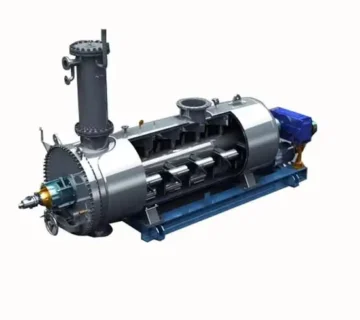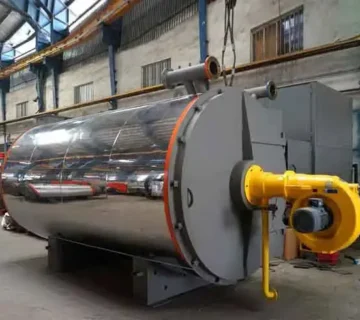Odor control is a major challenge in rendering operations, particularly in slaughterhouse waste processing. In this article, we’ll explore various solutions to minimize unpleasant smells.
1. Industrial Air Filters
Industrial air filters are essential for capturing odor-causing particles from the air, improving the surrounding environment.
2. Efficient Ventilation Systems
Proper ventilation helps circulate air and expel odors, keeping the workplace air clean.
3. Chemical Deodorizers
Special chemicals can neutralize odors by breaking down the compounds responsible for bad smells.
4. Regular Equipment Cleaning
Routine cleaning prevents the buildup of organic waste that can lead to increased odors. By using proper cleaning methods, you can ensure higher operational efficiency.
5. Temperature Control During Cooking
Maintaining optimal temperatures helps prevent the release of odor-causing compounds during the cooking process.
6. Thermal Oxidation Systems
Thermal oxidizers burn off odor-causing compounds, converting them into harmless by-products like water and carbon dioxide.
7. Ozone Generators
Ozone is highly effective in neutralizing odor molecules through oxidation, making it a good solution for odor control.
8. Using Fresher Raw Materials
Fresh waste generates less odor, so minimizing the time between slaughter and processing can significantly reduce smell.
9. Moisture Control
Controlling humidity levels in the environment helps reduce the release of volatile compounds that cause odor.
10. Odor-Control Microorganisms
Microbial treatments can break down odor-causing compounds biologically, reducing the overall smell.
11. Biological Air Scrubbers
These systems use bacteria to neutralize odors by breaking down organic compounds, offering a sustainable solution.
12. Activated Carbon Filters
Activated carbon is highly effective at adsorbing odor molecules, making it a good choice for controlling smell in enclosed spaces.
13. Waste Management Post-Processing
Proper disposal and management of waste after rendering are essential for keeping odors under control.
14. Gas Collection Systems
Systems for collecting and filtering exhaust gases can reduce the release of odors into the atmosphere.
15. Environmental Hygiene
Maintaining clean and hygienic facilities helps minimize the buildup of odor-causing substances.

Q&A
Q1: Can air filters fully eliminate odors in rendering cookers?
Air filters significantly reduce odors but may not completely eliminate them. Combining with other methods may be necessary.
Q2: How are chemical deodorizers applied in rendering systems?
They can be sprayed or incorporated during cleaning to neutralize unpleasant smells.
Q3: Does temperature affect the amount of odor produced?
Yes, maintaining an optimal cooking temperature can minimize the release of odor-causing compounds.
Q4: How does ozone help in odor reduction?
Ozone neutralizes odor molecules by breaking down their chemical structure.
Q5: How often should ventilation systems be checked?
Ventilation systems should be regularly inspected and updated to maintain their efficiency.
Conclusion
Reducing odor in slaughterhouse rendering operations requires a multi-faceted approach, combining air filtration, temperature control, proper waste management, and advanced technologies like thermal oxidation. These strategies not only improve workplace conditions but also contribute to a more sustainable and environmentally friendly operation.




